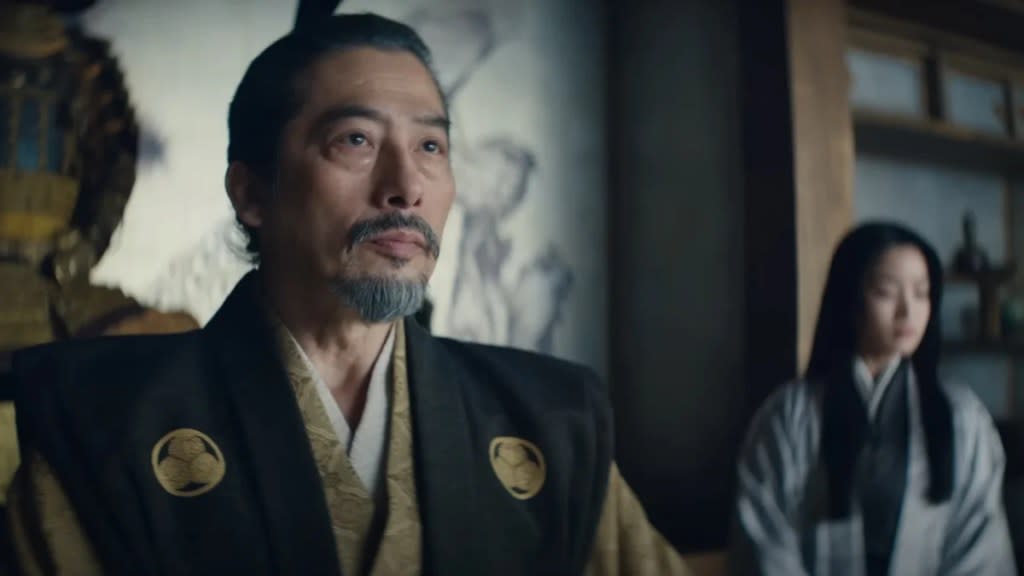‘Shōgun’ Star Hiroyuki Sanada Calls FX Series a ‘Dream East-Meets-West Project’

Since the age of 6, Hiroyuki Sanada has starred in some of the biggest Japanese and Hong Kong action films. The “Ring,” “The Last Samurai” and “Rush Hour 3” actor is well versed in what it’s like to adapt predominantly Japanese stories for Hollywood. Yet Sanada has “never” been part of a collaborative process quite like FX’s upcoming period saga, “Shōgun.”
“It was an interesting process,” Sanada said following a two-episode screening for press last Friday. “Very important, it never happens like this — deep communication from the beginning to the end. I believe this is a dream East-meets-West project. I’m so happy.”
Based on James Clavell’s 1975 novel of the same name, “Shōgun” is set in 1600s feudal Japan and follows the collision of three unexpected people: Lord Yoshii Toranaga (Sanada), a powerful leader at odds with his political rivals; John Blackthorne (Cosmo Jarvis), an English pilot who finds himself shipwrecked in Japan; and Lady Mariko (Anna Sawai), a woman with invaluable skills but dishonorable family ties. Together their alliance may change the course of history.
When it came to adapting this grand epic, executive producers Rachel Kondo and Justin Marks wanted to be respectful to both Clavell’s original novel and Japan as a whole, a country that has a history of being unfairly characterized in American media. To do this, the team first compiled a writers’ room largely composed of Asian-American writers, “all Japanese and Chinese-American and predominantly women,” Kondo said.
“Finding that space in between two worlds was actually the asset that we brought to the table rather than the anchor on our neck that didn’t give us enough to say,” Kondo said of this multicultural heritage.
The project started, as all projects do, with a script. But once the scripts were submitted to “Shōgun’s” Japanese producers, Justin Marks realized that the American team wasn’t just looking for notes.
“What you’re really looking for is approval,” Marks said. Early on, the team realized they weren’t getting the approval they so craved from one of their producers, Mako Kamitsuna.
“Mako held fast because she said, ‘I can’t even give you notes on this line because a Japanese character from this period wouldn’t even think this way,” Marks said. “So we began to really workshop it over the course of a year to change that, which was — for a writer — a very humbling process.”
However, it was Sanada himself who eventually spearheaded the translation process “Shōgun” would eventually employ. After ironing out the drama’s period-appropriate voice, scripts were initially written in English before they were sent to a team in Tokyo for Japanese translation. After that first translation, the scripts would be sent to Kyoto-based playwright Kiyoko Moriaki, who would “add her flair” to the scripts, Kondo explained. These revised scripts would finally be sent to the actors, who would add their own adjustments.
“The Japanese script, Justin sent to me every episode,” Sanada said. “I take notes and make changes, send back, and then back and forth, back and forth.”
Sanada took care to find a balance between period accurate speaking patterns and modern patterns that would be understandable to the average Japanese viewer. “We tried to make a good balance. If it’s too traditional, some young audience cannot understand, but we don’t want to subtitle Japanese to Japanese, right?”
Afterwards, the final scripts were then sent to producer Eriko Miyagawa, who transcribed all the dialogue into Japanese and then back to English for the subtitling.
“We have this process of re-checking every single dialogue and for [the writers] to understand what is being said so they can make the final decision how to best incorporate that into the subtitles so the Japanese-speaking audience can have the same experience,” Miyagawa said.
“The words that you see on screen in the subtitling were not the words that were originally written in, I would say, 80% of cases,” Marks said. “They went through this elaborate game of telephone to find their way back to the state that they’re in.”
Altogether, Marks estimated that this process took five years. It’s also just one element of this ambitious multicultural project that was first announced in 2018. “Shōgun” is a series that takes every element of its source material seriously, from its grand depictions of Kyoto and perilous sea voyages to its period accurate costuming.
“A lot of this show was not reinventing the wheel. It was inventing what a wheel is,” Marks said.
The first two episodes of “Shōgun” premiere Feb. 27 on FX. New episodes will premiere weekly and will be available to stream on Hulu the day after they air on FX.
The post ‘Shōgun’ Star Hiroyuki Sanada Calls FX Series a ‘Dream East-Meets-West Project’ appeared first on TheWrap.


